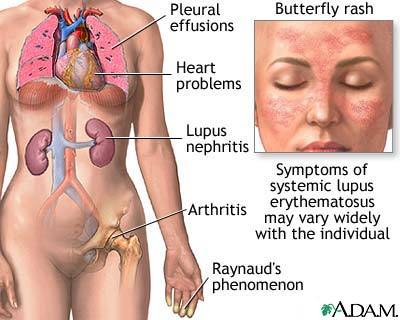Lupus is a chronic autoimmune disease, which anyone can get, although it does affect women far more often than men, and also affects certain ethnic groups to a disproportionate degree.
Although I did say that anyone can get lupus, it is thought that there needs to be a genetic predisposition to lupus, and then a trigger, in order for the person to actually develop the disease.
In my case, there was a family history of arthritis and related conditions, and the trigger was thought to be a severe and life-threatening allergic reaction to penicillin, which I had suffered some years earlier.

Lupus is a serious illness, which requires regular monitoring, and it can be fatal in some cases. However, since I was first diagnosed, diagnosis and treatment have improved dramatically, and most sufferers can now expect a normal lifespan.
9 out of 10 people with lupus are women, and - of those - most develop the disease between the ages of 15 and 45.
African-American women are three times more likely to develop the disease than other women, and Latino, Native American and Asian women are also disproportionately affected.
I do not fit into any of those ethic groups, however - and nor does a close friend who also has lupus - so I guess that just goes to show that the disease really can affect anyone!
In contrast to the age at which women are most likely to develop lupus, men are more likely to develop it either before the onset of puberty, or after the age of 50.
There is one famous male who has drawn attention to the disease, due to the scars the disease has left on his face, of course: The musician, Seal.

The symptoms of lupus vary widely between individual sufferers, and there are also various types of lupus, too. The most common - affecting 70% of sufferers - is Systemic Lupus Erythematosus, or SLE, which is the type that I was diagnosed as having.
The symptoms of SLE can affect numerous parts of the body, but include the skin (including allergies), the joints, vital organs, such as the heart and kidneys, and the veins.
Common symptoms are pain in the joints and extreme fatigue, but everyone is different. A classic, tell-tale sign of lupus - but not one that every sufferer will have - is the butterfly, or wolf rash, which is how the disease got its name, from the Latin for "wolf".

If you'd like more information on lupus, a very good place to look is The Lupus Site, which is an excellent resource for patients and their families. On it, you'll find comprehensive details about lupus and its symptoms, diagnosis and treatment, as well as forums where you can chat with other sufferers and get advice and support.